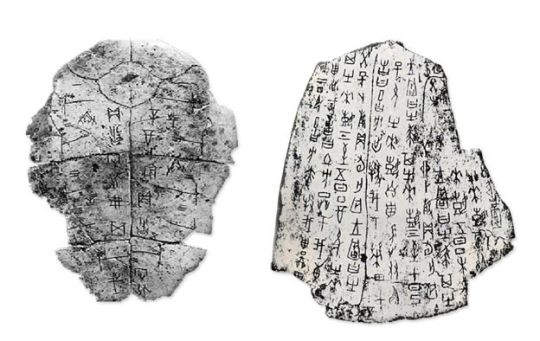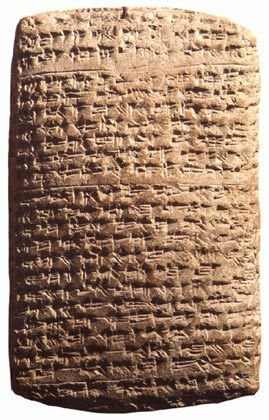#ancientcivilizacions
Explore tagged Tumblr posts
Text
Lost Ancient Civilizations...In the Middle of Nowhere - The Sumerians & Mesopotamia
It is truly remarkable at just how many ancient sites exist on earth, that you’ve never seen or heard of before. For most anyone, when we think of lost ancient civilizations, they think of sites such as, the Pyramids of Egypt or the perhaps the Great Sphinx. We think of the circular arrangement of stones that make up Stonehenge in England. We may think of ancient South American sites including Machu Picchu or perhaps the enormous, as well as mysterious puzzle of stones that make up the Sacsayhuaman wall in Peru. Or, maybe we think of the ancient Aztec or Mayan civilizations, and the pyramids that are found in Mesoamerica. But of course, for people that are more familiar with the topic of Lost Ancient Civilizations, essentially people who research it for fun in their spare time… For them, other, lesser known ancient sites may come to mind… Such as, the 12,000 year old site of Gobekli Tepe in Turkey, the world’s oldest known Megalithic site, which is a total mystery. Or perhaps they think of the of Angkor Wat in Cambodia. A very large, and impressive site that wasn’t even rediscovered til the mid-1800’s. And I’m sure some people may think of the Lost City of Petra, located in Jordan. Too few people are aware of this incredible site, which is mostly known for its brief appearance in the final scene of Indiana Jones and the Last Crusade. So, although some of the sites I just mentioned are not known by say, a majority of people, there are other ancient sites that are virtually unknown to almost anyone, which I’ll be sharing in this video. In fact, these details that I’m about to share, will really get your mind thinking about how much we don’t know about our ancient past, and more importantly, just how much is waiting to be discovered - and within our own lifetimes… Let me start off with an example that you may have seen in the news just this past week. Which was the fascinating discovery of lost ancient ruins, in Mosul, Iraq, which was hidden and unknown for at least 3 thousand, 4 hundred years.
youtube
Help support Jimmy in his effort to share interesting and otherwise unknown information with as many as he can, through contributing to his
Patreon: https://www.patreon.com/BrightInsight
Follow me on Instagram: https://www.instagram.com/bright_insi...
Follow me on Twitter: https://twitter.com/brightinsight6?la...
#oneinuniverse#sumerians#sumer#sumeria#mesopotamia#Gobekli Tepe#gobeklitepe#iraq#ancient#ancienthistory#ancientcivilization#history#mistery#ancientcivilizacions#ancient civilizacion
15 notes
·
View notes
Text
Civilizations Out of Nowhere

Graham Hancock, in his famous work “The Fingerprints of The Gods” argues that certain civilizations around the globe showed these signs of unusual intelligence in their architecture, science and writing systems. Intelligent human civilization extends much farther than we originally believed. The following is a presentation of some of the strange aspects of humanity that have been long forgotten, while remembering that our ancestors left us artifacts in the form of incredible structures and monuments that we are meant to decode and decipher. If the human story is a work in progress, let these monuments serve as important points to consider in the revision of this story. The monuments left behind by our ancestors would have had to coincide with their level of development given the time period; which calls for a revision of the human timeline. These historical anomalies raise questions about our collective history, and indicate how much remains to be discovered.
Human prehistory marks a time before records were kept, a time when, for several thousands of years, Cro-Magnons roamed across the planet, possibly forming small groups and living in primitive societies. The context of this strange condition changed again, approximately 15,000 years ago. When we compare the crudeness and primitive nature of Cro-Magnon side by side with the achievement of humans in the last 15,000 years, the gulf between the two widens considerably. We maintain the belief that human advancement and achievement follows a linear path upwards; each new civilization being more advanced and intelligent than the last. Just as we see jumps in advancement from one species to another.
From Neanderthal to Cro-Magnon, we see entire civilizations emerge out of nowhere with advancements in the sciences that have only recently been discovered. Several ancient civilizations across the world show an advanced level of astronomy and mathematics. As the Babylonian empire began to emerge 2500 years ago, one of their chief astronomers, Kidinnu, was able to map the annual movement of the sun and the moon that remained unchallenged until 1857, when astronomer Peter Andreas Hansen charted the arc of these celestial bodies to an error margin of only nine seconds.

A Babylonian almanac, mentioning future positions of the planets (British Museum)
During the Shang Dynasty of China, spanning between 1700-1100 B.C, a solar calendar known as the Ssu-Ten contained months that carried a precise length of 29.53055106 days, meaning leap years were taken into consideration and accounted for. An even earlier Chinese text, known as the Huang Ti-Ping King Su documented the Earth as a body which floated in space. Similarly, Greek scholars Permenides and Empedocles were quoted separately, stating “the moon illuminates the nights with borrowed light”. Over the last 10,000 years or so, modern humans were in possession of knowledge that suggests extraordinary intelligence [i]. What pushed early human societies over the edge, leading them to acquire such incredible knowledge at such an early stage? From the examples noted above, this was not an isolated incident, causing only one part of the globe to develop these skills. This level of “pre-advancement” was widespread, slowly changing the context of human history.

Two oracle bones from the Shang Dynasty in China (c. 1800 - 1200 BCE). Evidence from the Shang oracle bone inscriptions shows that at least by the 14th century BC the Shang Chinese had established the solar year at 365¼ days and lunation at 29½ days. ( CalendarsThroughTheAges)
Sumer is recognized as the cradle of man’s modern origins; the world’s first advanced civilization. Out of this region sprung an incredibly advanced high culture at approximately 3800 B.C. Located in the southern region of what is present day Iraq, the Sumerian civilization literally “exploded” with cultural firsts and incredible human achievements. Sumer was also known as Shinar, and was situated between the Tigris and Euphrates rivers. This region came to be called Mesopotamia, from the Greek word meso meaning ‘middle’, and potamia meaning ‘rivers’. The two rivers would be instrumental in allowing this early civilization to flourish, making commerce and trade possible.

A great city of Sumer ( thecultureconcept.com)
Mesopotamia was situated within the Fertile Crescent, where the geography, climate and presence of water encouraged the growth of agriculture. The Sumerian civilization was preceded by an earlier culture known as the Ubaid. The Ubaid were of an unknown origin, most likely comprised of the scattered tribes surrounding the two great rivers. Culture branched out into several disciplines with surprising levels of advancement. Astrology, botany, zoology, mathematics, and law would make up some of Sumer’s greatest achievements. Medicine and pharmacology were widely practiced. The first houses made out of bricks were found in this region. Sumer even had a working system of mythology, and a fully developed history of its own culture [ii]. At a time when hunter-gatherer societies were prevalent across the globe, the Sumerians were developing advanced legal codes and calculating astronomy at an intermediate level. One of the world’s first written forms sprung out of this region.
Sumerian civilization recorded their knowledge in a language known as cuneiform, consisting of narrow triangular shaped lines arranged in various patterns. The Sumerian alphabet contained pictograms – symbols that conveyed ideas and concepts in a way similar to oriental languages. This differed from phonetic values that are strung together to form words, like English. Writings were engraved on wet clay tablets which were baked and preserved. Over 500,000 of these clay tablets have been discovered, highlighting the breadth of knowledge this civilization possessed and the lengths to which they attempted to preserve it.

One of thousands of cuneiform tablets found in Iraq ( Wikipedia)
Sumerian civilization also developed unique landmark structures called ziggurats. These were pyramid shaped structures, hundreds of feet high; this method would predate the Gutenberg printing press by 2500 years. This high culture spanned a total of three separate dynasties, with the last one beginning at approximately 2100 B.C. This civilization brought forth two of the world’s first cities; Uruk, followed by Eridu. Both cities would act as blueprints for the new concept of the city, which would act as concentrations of skilled trades and arts. In these cities, craftsmen, writers, doctors, mathematicians and lawyers would for the first time in history, be able to exchange their services. The smaller city states of Sumer eventually underwent unification, becoming part of the Babylonian civilization that would span across the entire Mesopotamian region.

3D reconstruction of the Ziggarut of Ur ( Wikipedia)
Aside from agriculture, medicine and commerce, the Babylonians had an impressive understanding of astronomy. Their knowledge of the stars and celestial bodies were compiled into clay tablets, which would indicate the movement of constellations and the behavior of the sun in relation to the moon. Important events such as equinoxes and eclipses were also accounted for. A collection of Babylonian scientists compiled their knowledge of the movement of the stars, their movements and constellations into a work known as the MUL.APIN, meaning “the plough”, which was the name given to the document’s first constellation. The origin of the document dates back to 1370 B.C.
An equally impressive document named the Enuma Anu Enlil is a number of astrological tables that not only accounted for eclipses and celestial events, but was also used as a system of prophecy. Though their methods may have involved some elements of superstition, their methods of calculation were far from primitive. Babylonian astronomy and mathematics utilized a unique system of calculation based on multiples of the number 60 known as the sexagesimal system. Babylonian scientists were able to calculate measurements as precise as one sixtieth of one degree, otherwise known as one arc minute [iii].
The Babylonian civilization is distinct in that it set two very distinct precedents in our collective human history. Firstly, it set the standard for what constitutes a modern civilization, and its pursuit of astronomy would mark the first known instance that humans would actively observe and collect data on phenomena outside of their immediate physical surroundings. In essence, this was a coming of age for our species. But there is a broader question at hand. What are the prerequisites for civilization? Do they simply appear out of nowhere, the way that the Cambrian Explosion produced new lifeforms? Also, what does early civilization tell us about our relationship to other humans and our relationship to ourselves?
The above article is an extract from “ The Human Anomaly ”, and has been republished with permission. For more information, click here.
RBP
Featured image: Artist’s reconstruction of the Sumerian city of Ur. ( Kings Academy )
By Tashi Javed
References:
[i] Steiger, Brad. Worlds Before Our Own.pg,134. London: W.H. Allen, 1980. Print.
[ii] Sitchin, Zecharia, Divine Encounters, 7
Source: https://www.ancient-origins.net/ancient-places-opinion/civilizations-out-nowhere-002248
#oneinuniverse#sumerian#sumer#sumeria#ancienthistory#ancientcivilization#ancientcivilizacions#history#civilizations#cuneiform
0 notes